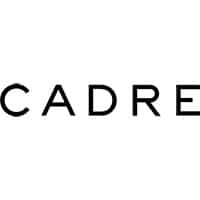With the recent turbulence in the financial markets, now is an excellent time to discuss adding alternative investments to your portfolio.
No one knows for sure where the financial markets will go from here, but that uncertainty alone is a compelling reason to seek out alternatives. Investing in the next few years may not yield the kind of predictable returns the past decade has produced.
One of the best ways to hedge against that outcome is by moving beyond typical portfolio allocations. Unstable financial markets create opportunities in alternatives that may act as a valuable counterweight to declines in more traditional investments.

What are Alternative Investments?
There’s probably no official definition of alternative investments. But a simple explanation may be that they are any investments beyond the traditional portfolio allocations of stocks, bonds, and cash. That leaves a very broad field of options.
Many investors are already holding an alternative investment, but they don’t even consider it to be one – the family home. Real estate is an alternative investment, because it isn’t something you can hold in a retirement portfolio – at least not physically. It also has the benefit of providing shelter while building equity over many years.
But even though your home can qualify as an alternative investment, it’s not what we’re going for in this guide. Perhaps it’s too conventional.
Either way, we’ll be looking at a long list of alternative investments, some you’re likely already aware of, and others you’ve never even considered.
Why You May Want to Add Alternative Investments to Your Portfolio
There are times when the financial markets behave in an orderly and even predictable manner. The stock market from March, 2009, through February, 2020, is a textbook example. Other than a few relatively minor dips along the way, the market has provided a virtual elevator ride up for investors large and small.
But in the past couple of months that predictability has been shattered. And what may be unknown to many younger investors today is that the performance of the stock market prior to the coronavirus disturbance isn’t quite as “normal” as many believe it to be.
Despite extended periods of steady increases – lulling many into believing stocks (and particularly, exchange traded funds) are only slightly more risky than fixed income assets – longer-term history shows a pattern of successive advances and declines, some of which can last for years.
Right now, we have no idea if the current turbulence will be a short-term, one-off event, or the beginning of a prolonged bear market.
If it ends up being a bear market, alternatives will become much more attractive. That’s because the most basic attribute of alternative investments is their countercyclical nature. (The more technical term is uncorrelated investments.) That is, they tend to move independently of the mainstream financial markets. Some will rise specifically in response to the decline in stocks and bonds, while others will represent speculative individual investment opportunities that produce one-time gains.
Either way, holding a small allocation in alternative investments has the potential to stabilize your investment returns during a time of instability. And if you happen to be in the right alternatives, you may even see your portfolio continue to grow despite the prevailing trends in the conventional markets.
Caveats On Alternative Investments
Before we get into our list of the best alternative investments to add your portfolio, we want you to be aware of some important facts:
- Alternative investments are alternative precisely because they generally involve a higher degree of risk than stocks, bonds and cash.
- Many alternative investments involve so much risk that they are also speculations. It can often be difficult to tell the difference between the two
- You should maintain only a small percentage of your portfolio in alternative investments.
- The bulk of your investments should continue to be held in more traditional assets, like stocks, bonds and cash.
- We’re not endorsing any of the alternative investments listed in this guide, nor the specific funds or investment platforms where they can be held. All inclusions are for representative purposes only.
- Alternatives are not a “get rich quick scheme”, but a strategy to stabilize the returns in your portfolio.
- Never invest in anything you don’t understand or are not comfortable with. That’s the reason why we’re presenting 21 alternatives – to give you a field to choose from.
- Not all alternatives are exotic. Some are surprisingly conventional, but represent alternatives in the way they’re handled, or in the timing of the investment.
Now that we’ve gotten those caveats spelled out, let’s get on to the list of alternatives.
The 21 Best Alternative Investments To Add To Your Portfolio
Our list of the best alternative investments to add to your portfolio is a seriously diverse one. The list hasn’t been ranked and that’s not an accident. Given the speculative nature of alternative investments, not all alternatives will work under all circumstances. There’s no such thing as an “all weather alternative investment”, which is why you may want to select several from among our list of 21.

Hedge Funds (It’s NOT What You’re Thinking!)
When most of us hear that term we think of a collection of slick investment strategies used by sophisticated investment advisors for wealthy clients. There is of course some truth to that. But thanks to the development of so many different investment platforms on the Internet, it’s now possible for even small investors to participate in hedging-related investments.
Titan Invest isn’t a hedge fund in the strict sense, but rather an actively managed investment platform that attempts to outperform the general market using hedging strategies where necessary.
For example, as much as 10% of your portfolio will be hedged when the stock market is not in a downturn, while 20% will be during a downturn. The strategy is designed to minimize losses during times of market disturbances. Titan Invest is available for both taxable investment accounts and IRAs and has no minimum initial investment requirement.
Read our full review of Titan Invest here.
Precious Metals
Precious metals mainly include gold, silver, platinum, and palladium. Gold is the easiest to invest in since you can do so in various forms. That includes gold bullion coins and bars, gold exchange traded funds (ETFs), gold-mining stocks, and gold funds (which are primarily comprised of the stocks of gold-mining companies).
Gold-mining stocks are admittedly speculative, and while they can have tremendous upside potential when the price of gold rises quickly, they can just as easily crash and burn. Holding the metal itself is safer for the average investor. The most convenient way to do this will be through a gold ETF, like iShares Gold Trust.
Rental Real Estate
If owning your own home is a solid alternative investment, rental real estate may be even better. It has many of the same advantages, including long-term appreciation and the paydown of the mortgage on the property. But you’ll also get the benefit of rental income to cover the operating expenses, and hopefully generate a profit.
While individual rental property is expensive, you can invest more cleanly through real estate crowdfunding platforms.
Platforms such as Fundrise, RealtyMogul and Diversyfund allow you to invest in large apartment complexes with a small amount of money. Best of all, apartment buildings often perform well even when financial assets are in decline. After all, people always need a place to live, even during the worst of times.
Here's a comprehensive listing of some of the most popular real estate crowdfunding platforms, in several different categories:
Company Website | Fees | Account Minimum | Accredited Investor | Review | |
|---|---|---|---|---|---|
None | $5 | No | |||
0.25% | $100 | No | |||
None | $500 | No | |||
1%/year | $500 | No | |||
0.30% - 0.50%/year | $1,000 | No | |||
2% annual management fee. | $5,000 | No | |||
Intake fee of between 0.5% and 1.0%. 1% annual management fee. | $10,000 | Yes | |||
Intake fee of between 2.0%. 0.75% annual management fee. | $3,000 -$10,000 | Yes | |||
| $5,000 | Yes | |||
| $1,000 | Yes | |||
| $1,000 | Yes | |||
| $1,000 | Yes | |||
Typically 0.50% to 2.5% | $25,000 | Yes | |||
None | $5,000 | Yes | |||
Intake fee of between 1-3%. 1.5-2% annual management fee. | $25,000 | Yes |
Cryptocurrency
Cryptocurrency is the wild west of the investment universe.
It’s an independent, Internet-based exchange system that’s not tied to any government or country. Cryptocurrencies have only been around for a little over a decade, and they’re not well understood by the general public. But that’s precisely what gives it at least some credibility as an alternative investment. It’s completely uncorrelated with any other type of asset.
If you’re interested in investing in cryptocurrencies, you can trade them for free on Robinhood with very little money, or even better, buy crypto on one of the legitimate cryptocurrency exchanges. Be careful with cryptocurrencies, however, since they don’t have a long track record and they can be quite volatile.
My suggestion? Start slow and buy some relatively safe stablecoin like USDC or GUSD, and hold it in a cryptocurrency savings account at Celsius Network or BlockFi to earn 5-10% APY to start. Once you've educated yourself a bit more, move on to some of the more volatile crypto coins.
Crypto Exchange | Promotion | Open Account |
|---|---|---|
$5 new account bonus | ||
$10 BTC bonus when you trade $100 | ||
$25 bonus in CRO coin | ||
20% of trading fees for users you refer | ||
20% of trading fees for users you refer. Earn 40% if you hold 500 BNB. | ||
Earn 1000 Stellar Lumens once someone you refer completes a trade. | ||
15% of trading fees for users you refer. | ||
$20 bonus with initial deposit of at least $1,000. | ||
Get $10 in Bitcoin with your first crypto trade of $10 or more. | ||
Get a free share of stock. | ||
Get free stock worth up to $1600. | ||
$50 bonus with purchase of $1,000 in cryptocurrency. | ||
Cell | ||
Free crypto coin with $10 purchase |
Open an account to trade some of the most popular crypto coins with Robinhood for free, and get free stock! Read our full Robinhood review here.
Artwork
Much like hedge funds, investing in artwork has always been the preserve of the wealthy. And that may be the best single argument to consider investing in it.
If you’re an average investor, you probably don’t know much about artwork. And you probably don’t have the hundreds of thousands of dollars – or even millions – that you would need to purchase the most priceless pieces of art.
But there’s an investment platform known as Masterworks that will allow you to purchase a small sliver of fine artwork for as little as $20.
They emphasize pieces they believe will have the best price growth potential, so you don’t even need to know anything about art to participate.
Read our full review of Masterworks here to find out more about investing in art.
Collectibles
In a real way, these are the ultimate alternative investment if only because you’re pretty much on your own in making it work. That’s because there are so many potential collectibles, and no way to know for sure which ones will pay off in the long run. It’s something much like value investing in stocks – you buy out-of-favor collectibles now, in the hope they’ll be worth a lot more in the future.
Collectibles have always been more of a hobby than an investment. If you know a lot about a particular type of collectible, you may have an inside track. You may already know the value of particular items so you’ll know what’s a deal and what’s not. One of the advantages is that the field is wide open. People invest in antiques, rare stamps, numismatic coins, comic books, memorabilia, and even antique cars, just to name a few.
Just be aware that the fact that something is old or even rare isn’t a guarantee of future value. Collectibles are best handled by those who have specializations, and know what they’re doing.
Farmland
One of the most uncorrelated alternative investments is farmland. Because of its value in food production, it can increase in price even when paper investments are falling.
Best of all, you don’t need to go out and buy a farm to participate. In fact, you don’t even need to know anything about farming and all. You can invest in a real estate crowdfunding platform dedicated to farmland like FarmTogether. Read our full review of FarmTogether here.
With a minimum investment of $10,000, you can buy a piece of a working farm that’s highly specialized and likely to increase in value.
There are other platforms that allow you to invest in Farmland as well, for example AcreTrader.
Wine
A lot of us enjoy a good glass of wine every now and then, but did you know that wine is now also available as an alternative investment? In fact, wine has outperformed the S&P 500 by 1000% over the past 20 years!
Vinovest is a service that allows you to invest in a managed portfolio of fine wines, with a minimum investment of $5,000.
When you decide to invest their experts will select a portfolio of wines for you, buy the wine, authenticate it. You're investing in actual bottles of wine, not a share in a collection or a fund.
They will store your wine in a secure and fully insured facility, and if you want to you can even have them send you one of your bottles.Of course if you're using this as an investment, that might not be the way to go.
The investment has a low correlation to the stock market, and the pros at Vinovest will help alert you to a good time to buy or sell your wine, to improve returns.
Venture Capital
Venture capital is mostly about investing in upstart companies that demonstrate future value. It’s an opportunity to make money on individual business ventures, even when the stock market is misbehaving. It’s not for the faint of heart, and direct venture capital investing is usually reserved for accredited investors. Those are either high income, high net worth, or both.
Even if you’re not an accredited investor, there are companies you can invest in that specialize in venture capital. Those include the Blackstone Group and KKR. Venture capital is their business, and you’ll be investing in the success of those companies, rather than an individual ventures themselves.
Investing in Yourself
Most people don’t think of this as being an alternative investment but it’s actually one of the best investments you can make.
For example, by investing in improving your health, you’ll be increasing your energy and vitality, which can improve your productivity. And by taking specific courses or training programs, you can be acquiring valuable skills that will improve your income earning ability. That’s the single biggest asset most people have.
It may also pay to invest some money learning how to create a whole new income source, such as a business. For example, you can learn to make money with a blog, or you can invest some money in building a new business. After all, if you’re willing to invest money in the stock of other companies, why not just invest in a business of your own?
Options Trading
Options trading has become much more popular among ordinary investors in recent years. It offers an opportunity to make large gains with relatively short-term investments, rather than relying entirely on buy-and-hold strategies. One of the major advantages of options is that it offers an opportunity to profit from both gains and losses in stock prices.
If you don’t know much about options trading, you can cut your teeth with a service like Webull. There, you can practice trading options with “play money” before going live with real money.
Read our full Webull review here.
Property Flipping – Without Getting Your Hands Dirty
This may be more of an activity than it is an investment. But it can be very profitable especially in softer housing markets. The basic idea is that you buy a property on the cheap, renovate it, then sell it at a profit.
That involves a lot of work, certainly more than most people are willing to do.
A better option is to invest through a real estate crowdfunding platform known as Groundfloor. You’ll invest money in loans made to property flippers, and earn returns of between 7% and 14% on an investment as small as $100.
Read our full Groundfloor review here for more details about how it works.
Energy
Energy may be another asset class that’s difficult to imagine as an alternative investment. After all, several energy companies are included in the S&P 500. But much like precious metals, energy has a way of charting a course that’s independent of the financial markets. For example, the stock market may be rising largely because energy prices are falling.
And that creates an opportunity.
Since energy is critical to the global economy, you can rest assured that conditions in the industry will always improve, even after the worst washouts. We’re in a situation like that now, where the price of oil has declined from above $60 a barrel at the beginning of the year, to something less than $20 now. The potential investment gains when that dynamic reverses can be dramatic.
You can invest in energy through individual energy companies, or through mutual funds and ETFs that give you an opportunity to invest in a portfolio of companies.
Commodities
These are very similar to investing in energy, which itself is a commodity. But there are many other products in the commodity category, such as industrial metals and food. If you see a potential shortage of copper developing, you can invest in copper related assets including stocks.
The same is true with food items, and maybe more so because of droughts or crop damage. For example, if large wheat growing areas in the world are destroyed by droughts, you can take a position in wheat futures and reap gains that shortages produce.
Become a Silent Partner
Maybe you don’t want to create your own business, but do you know somebody else who is? IF that person has the capabilities and begins a business that has serious potential, you can invest in it as a silent partner.
Every business, especially startups, need capital. While the current business owner acts as the managing partner, you can come in as an equity partner with your investment. For example, you can invest a certain amount of money in the business in exchange for a percentage of the profits. That would not only give you an investment in a viable business, but it would also generate a completely passive income.
Buy Tax Liens
You may have seen this advertised on late-night TV or even on the Internet, but it’s a real thing. Local governments can sell tax liens imposed on delinquent property owners. Once you purchase the tax lien, the municipality will have its tax revenue, and you’ll have the ability to foreclose on the property if the current owner doesn’t pay you the amount of the lien – plus interest.
Foreclosing on a property can be a messy process, and certainly one you’ll want to avoid. But you’ll have the advantage that the typical property owner would rather make good on the tax lien than lose their home.
Swing Trading
If you’re familiar with day trading, swing trading is its slightly longer-term cousin. Instead of trading within the same day, you’re using technical analysis to produce gains over several days or several weeks. The basic concept is to become familiar with the price patterns of popularly traded stocks, buy when they’re on the low end of their range and sell once you can book a profit. It has the potential to produce returns when buy-and-hold strategies seem to be breaking down.
This is another alternative investment strategy that requires a very strong stomach. You can learn all about swing trading through JasonBondPicks.com.
Build or Buy – Then Sell – Websites and Web Domains
Websites are property – something like real estate – except they exist on the Internet. And just because they’re virtual doesn’t mean they don’t have value.
For example, a certain web domain – which is the name of the site (like Bible Money Matters) – may have value by itself. Similar to picking stocks, you can purchase (and eventually sell) web domains on sites like Flippa. You might pick a web domain that could be relevant in the future. For example, if you believe all-electric cars are the future of the auto industry, you can purchase web domains with related titles. As electric cars become more popular, the demand for those domains will increase. That domain you purchase for $200 today may be worth several thousand dollars five years from now.

You can also build and sell websites if you have that ability. By creating your own site, which typically requires very little money, you may be able to sell it for many thousands of dollars after the site is generating a steady income stream.
Penny Stocks
These may be more of a speculation than a true alternative investment, but they can perform well even when the financial markets are misbehaving.
Penny stocks are generally defined as companies whose shares have fallen below $1, or even $5. That’s usually because the companies have come through hard times and may still not be out of hot water.
But the advantage of super-low prices is that you can build a portfolio of penny stocks with just a few thousand dollars. You’ll want to fill it with the stocks of companies that you believe are likely to make a turnaround. You may hold 20 stocks in your penny stock portfolio, but if only a couple of them turn around, the investment return can be substantial.
Do it long enough, and you might even develop the skills to identify turnaround candidates with surprising frequency. Now that most brokerage firms don’t charge commissions, this kind of investing is even easier than ever.
Inverse Exchange Traded Funds
Did you know there are funds that can make money when the stock market is falling?
Nearly every investor is familiar with exchange traded funds. They’re something like mutual funds, except their composition is based on an underlying index. The fund holds a portfolio that matches the composition of the index.
But did you also know that there’s something called an inverse ETF that enables you to make money when the stocks in the index decline?
They’re highly speculative because you can also lose money when stocks are rising, which is most of the time. But if you believe the general direction of the stock market will be down in the foreseeable future, this is a potential alternative investment.
Just make sure you get out as soon as possible if the market reverses course and starts heading higher. It makes a strong argument for making only a small investment in an inverse ETF.
30-Year US Treasury Bonds
These may not seem like an alternative investment, but they can be. You may be aware that bonds and interest rates have an inverse relationship. That is, when interest rates rise, bond values fall. When interest rates fall, bond values rise.
The 30-year US Treasury bond may be the ultimate play on falling interest rates – and rising bond values. The principal value of the bonds are guaranteed by the US government if the bonds are held to maturity. But if you purchase a 30-year bond and interest rates fall, the market value of the security will increase. It’s a pure play on falling interest rates but even if rates increase you’ll recover your full principal upon bond maturity.
You can buy 30-year Treasury bonds commission-free through Treasury Direct, with an investment of as little as $100.
Buy Stocks After a Market Crash
Why is this an alternative investment? Because after a market crash few others are buying. That makes it the perfect time – and even the best time – to invest in stocks. You’ll be able to scoop up stocks at bargain basement prices. In fact, this is the whole reason for holding at least some of your portfolio in cash. That cash can be used to buy up stocks at depressed prices, and that’s usually when you’ll get the best long-term returns.
You don’t have to do anything fancy here either. After a big slide in the market, and when it appears the market has found a stable base, you can simply invest in an index-based ETF based on the S&P 500.
Final Thoughts on the Best Alternative Investments to Add to Your Portfolio
The purpose of adding alternative investments to your portfolio isn’t to create overnight riches, even though some advocates promote them as doing just that. Rather, it’s to add countercyclical investments to your portfolio that are likely to perform well even when more traditional assets are languishing in the gutter.
Choose the alternative investments that you believe will work best for you. You don’t need to invest any more than 10% or 15% of your portfolio in the whole group. And under certain circumstances, that may be enough to keep your portfolio in positive territory even in the most uncooperative financial markets.
Think of them as portfolio insurance.











































Share Your Thoughts: